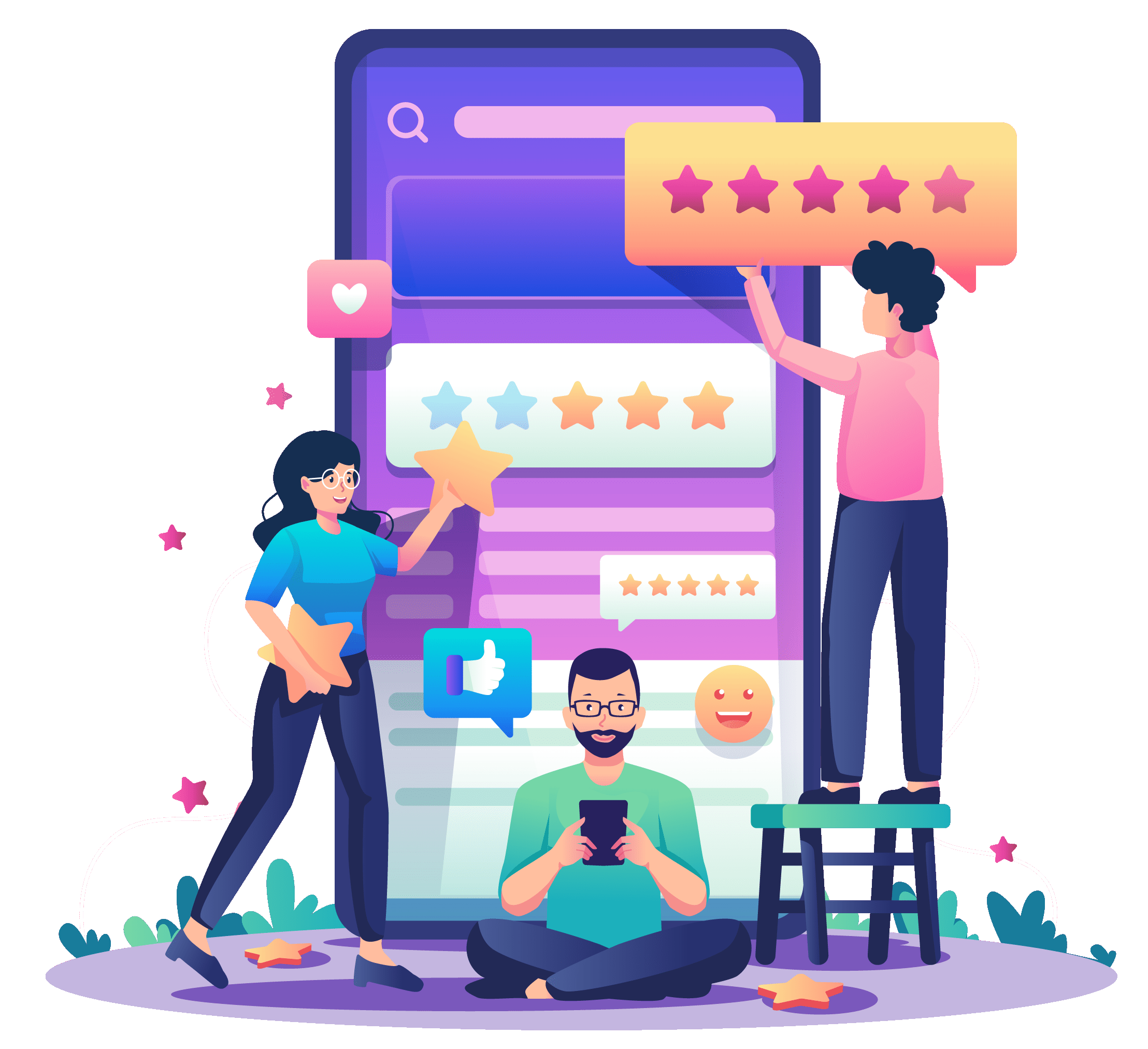For small businesses, every website visitor counts. But too often, common web design mistakes—like slow load times or confusing layouts—cause visitors to leave before they’ve had a chance to learn about your services.
These mistakes don’t just hurt user experience; they damage your search rankings and cost you potential customers. In today’s digital-first world, avoiding these common design pitfalls is crucial to keeping your business competitive and growing.

Let’s dive into the web design mistakes to avoid—and how fixing them can set your business on the path to success.
Top Web Design Mistakes That Hurt Small Businesses
Here are some of the website design mistakes that can cost small businesses valuable traffic and conversions:
1. Slow Loading Speeds
In the blink of an eye, you could lose a potential customer. That’s how fast visitors decide to stay or leave based on your website’s loading speed. For small businesses, every visitor counts immensely—each one could be your next big sale.
Plus, Google rewards quicker sites with better rankings, so a snappy website not only keeps your visitors from bouncing but also boosts your presence online. Let’s speed things up and ensure your website loads swiftly, keeping your visitors engaged and eager to explore what you offer.
Don’t let a slow load be the reason customers turn to your competitors.
2. Lack of Mobile Responsiveness
Today, more than half of all internet activity happens on mobile devices, making mobile-friendly design a must-have, not a luxury. For small businesses, it’s crucial that your site performs flawlessly across all devices—smartphones, tablets, and desktops.
If users struggle to navigate your site on their phones, they’re likely to switch to a competitor whose website adapts better to different screen sizes. Furthermore, Google boosts the search rankings of mobile-responsive sites, underscoring the need for a versatile and responsive website design.
3. Unclear Navigation
When users visit your website, they need to be able to find what they’re looking for quickly and easily. Complicated or confusing navigation systems lead to frustration, resulting in users abandoning your site before taking any action.
This can cause a high bounce rate, negatively affecting your SEO performance and hurting your chances of converting visitors into customers. Simplifying your navigation by making it intuitive and user-friendly keeps people engaged and guides them towards the information or services they need.
4. Poor Use of Calls-To-Action (CTAs)
Your call-to-action is your direct line to your next customer. Instead of settling for the all-too-common “Click Here” or “Learn More,” why not give your visitors a real reason to engage?
Craft CTAs that resonate—tell your visitors exactly what they’ll get by taking action, whether it’s exclusive content, a special discount, or a free consultation. Clear, compelling CTAs not only guide your visitors effortlessly towards the next step but also turn casual browsing into real business opportunities.
Don’t let a weak CTA be the reason you miss out on connecting with potential customers.
5. Overcomplicating Website Design
More isn’t always better when it comes to web design. Many small businesses fall into the trap of overloading their websites with too many elements—images, text, colors, and features—creating a cluttered and overwhelming experience for users.
In contrast, clean and simple designs make it easier for visitors to focus on your key offerings and navigate your site. By prioritizing simplicity, you encourage higher engagement and help users find what they’re looking for without distractions.
6. Failing to Communicate Brand Purpose
Is your website clearly telling your story? If visitors can’t quickly grasp what your business is about and what sets you apart, they might feel lost and look elsewhere. Clarity in your brand message isn’t just nice to have—it’s essential.
It turns casual browsers into potential clients by building trust and making it clear why they should choose you over the competition.
Make sure your website vividly communicates what you stand for; it’s the key to drawing people in and guiding them towards engaging with your services.
Steer clear of these design traps for better business! Mastering your website’s design is key to winning over more customers.
By tackling these common issues, you can boost your site’s appeal and functionality, making every visit a potential conversion. Think of your website as the front door to your business—it should welcome visitors and make a strong first impression.
Avoid these pitfalls, and you’ll set the stage for more traffic, better engagement, and, ultimately, business growth.
How to Fix Common Web Design Mistakes
Ready to turn your website woes into wins? Here’s how you can smooth out those common bumps and boost your site’s appeal:
1. Optimize Loading Speeds
Boost your website’s speed by shrinking image file sizes and cleaning up your code. A fast-loading site doesn’t just keep visitors around—it also helps turn them into customers.
Try using lazy loading, which ensures that only the images and videos visible to users load up, saving precious data for those on mobile devices. Adding a content delivery network (CDN) can also speed things up dramatically by storing your content in various locations around the world, closer to your users.
Faster sites enhance the user experience, improve your rankings in search results, and draw more traffic, helping your business stand out in the digital crowd.
2. Optimizing for Mobile Users
With the increasing number of people accessing websites on their smartphones, making sure your site adapts smoothly to various screen sizes is crucial. Tools like Google’s mobile testing platform can help identify areas that need improvement.
Prioritize designing easy-to-tap buttons and clearly readable text to enhance the experience for touch users. It’s also a good idea to streamline your navigation and forms, making them simpler and quicker to use on smaller devices.
A mobile-friendly site ensures visitors can browse comfortably, boosting both engagement and the likelihood of turning them into customers.
3. Enhance Site Navigation
A well-structured site helps visitors find what they need quickly. Organize your pages logically, ensuring that essential information is easy to locate. Simplify your menus by eliminating unnecessary options and use straightforward labels to make navigation intuitive.
For larger sites, adding a search function can improve the user experience, making it easier to track down specific content. When users can browse your site effortlessly, they are more likely to stay longer and engage with your business.
4. Craft Effective CTAs
Guide your visitors toward taking action by crafting clear, compelling calls-to-action (CTAs). Use actionable language that speaks directly to the user’s intent, such as “Get Your Free Quote Now” or “Start Your Free Trial Today.”
Position your CTAs strategically where they’re most likely to capture attention—above the fold, within relevant content, and at the end of pages. For even better results, experiment with contrasting button colors and micro-animations to make your CTAs stand out.
Additionally, A/B testing different versions of your CTAs can reveal which phrasing and placement drive the most engagement. Well-placed and thoughtfully designed CTAs can dramatically increase conversions and user interactions.
5. Keep Your Design Clean and Functional
A minimal, focused design isn’t just aesthetically pleasing—it enhances usability. Keep your layout simple by prioritizing essential elements and removing distractions that clutter the user’s path.
Take advantage of white space to create a breathable design, which helps direct attention to key areas like your CTAs and important content. Consider usability testing to see how real users interact with your site, identifying any areas that might be confusing or slow them down.
Beyond the visual aspect, make sure your site loads quickly and works smoothly on all devices. A clean, functional design not only improves the user experience but also strengthens your brand’s professionalism and trustworthiness.
6. Align Your Website with Your Brand Purpose
Your website should clearly reflect your brand in every detail. Ensure your visuals—colors, fonts, and images—match your brand’s values and personality. Keep your tone consistent across all pages, and consider adding unique elements like custom icons or videos to stand out.
Share your brand’s story to create a stronger emotional connection with visitors. Lastly, ensure your site provides a seamless brand experience across all devices, reinforcing trust and building a lasting impression that encourages conversions.
Give Your Website the Edge It Needs. Making these design improvements will do more than just enhance your site’s look—it will elevate how visitors interact with your brand.
By focusing on faster loading times, smoother navigation, and a design that reflects your brand’s values, you’ll create a space that draws people in and keeps them connected. These thoughtful updates will turn your site into a more effective tool for converting casual visitors into loyal customers. Start refining your site today, and watch your business grow.
How Avoiding These Web Design Mistakes Can Boost Your Business Growth
A well-designed website is more than just a digital storefront—it’s a key tool for long-term business growth. By proactively avoiding common website design mistakes, you’re laying the groundwork for sustained success. Here’s how:
Each improvement directly impacts your brand’s credibility, user satisfaction, and long-term potential for growth.
Partner with RB Web Development to Fix Your Website
Your website should work for your business, not against it. If slow performance or poor design is driving visitors away, RB Web Development is here to help. Whether your site needs a complete redesign or a few key improvements, we offer solutions tailored to your business needs.
Our team specializes in creating clean, user-friendly designs that not only look great but also improve your SEO and drive more conversions. Let’s make your website a powerful tool for growth, not a missed opportunity.
Ready to take the next step? Contact RB Web Development today for a consultation, and we’ll help you build a site that fuels your success.

About the Author
RB Web Development, originally based in Norwalk, IA, made the move to Decorah in 2025. Founded in 2008 by Rob Batzler, the agency reflects Rob’s web design journey, which began in 2000. After honing his expertise at renowned Des Moines firms, Rob launched this trusted agency to deliver expert web design solutions. His dedication and deep industry knowledge make RB Web Development a top choice for businesses.




